 I sat in in the dark, damp, attic room of my crappy student flat in Aberdeen, poring over swell charts and surf forecast sites as rain lashed the windows; the howling wind threatening to tear them from their frames entirely. When you live in the north of Scotland, you get used to storms. If there’s one constant about the Scottish weather, it’s how fickle it is. This time though, it was working in my favour: after weeks of flats, the wave buoys were finally indicating life in the North Atlantic, and a swell marching towards shore with all the earnestness of soldiers to battle.
I sat in in the dark, damp, attic room of my crappy student flat in Aberdeen, poring over swell charts and surf forecast sites as rain lashed the windows; the howling wind threatening to tear them from their frames entirely. When you live in the north of Scotland, you get used to storms. If there’s one constant about the Scottish weather, it’s how fickle it is. This time though, it was working in my favour: after weeks of flats, the wave buoys were finally indicating life in the North Atlantic, and a swell marching towards shore with all the earnestness of soldiers to battle.
A west swell, with more than a touch of north. And winds forecast to drop… Turning off my battered and flickering desk lamp, I grabbed the keys to my equally battered Nissan Micra and started the drive north to Thurso.
Floating through the river mouth into the lineup at silly o’clock the next morning, waves throbbing across the reef like some oceanic pulse, rhythmic as a giant heart, I’d never felt more connected to nature. I stroked into my first wave of the day, ducked under the pitching lip, and stopped thinking.
And that’s the point, isn’t it? That’s why we surf: to escape the mundane realities of modern life. Harnessing and riding these oceanic freight trains takes us back to a more elemental state: we’re animals, floating in an incomprehensibly vast liquid mass that simply doesn’t give a shit about us. It can give you the ride of your life, or take your life away with total equanimity; it doesn’t care. Nothing else is as humbling, or as thrilling.
Jenny Jones X-Games Gold medal and Olympic bronze medal winner learnt on a dry slope
Which begs the question: why are we trying to build artificial waves? Do we really think we can emulate or better nature? Sure, we can probably engineer a geometrically perfect wall of water, but that’s only part of the equation. What about the rest? What about the smell of salt on the air, the pound of water on rock, the birds, the seaweed… The life? Can the experience ever compare? If you’ve been following recent press releases about the impending reality of beautifully manufactured and manicured waves in the surf media, then you’ll have picked up on the controversy in forums and magazine comment boxes. Conversation swings from talk of “kook gardens” to “it’s a wave, just shred it!” As ever, surfers are an opinionated bunch.
Artificial waves will never replace the real thing, but they do bring a lot of benefits
However, the answer is actually pretty simple: why not? Artificial waves will never replace the real thing, but they do bring a lot of benefits. Imagine a totally predictable wave, breaking in exactly the same way every single time: where better to refine technique, and perfect that aerial? Critics claim that this predictability is a negative, and unnatural, but aren’t most of the waves found in ’10 most perfect’ lists the sort that grind out with mechanical consistency? If surfing is going to maintain its physics-busting aerial progression, wave parks are likely to be where it’ll happen. Blow out of a perfect liquid ramp at JBay just to try a backflip or something mad you know you won’t stick? Nah. In a wave pool, when you know the next wave will line up identically… Well, why not?
Moving further down the surfing ranks there are still nothing but upsides. Need a surf, but due to work you can’t get to the beach at the right tide? No worries. Swell and wind not cooperating with your days off? Screw it. Local break too crowded to get a decent wave count? Not a problem. Work and family keep you living inland? It may not be the real thing, but at least a local surf park will help keep your skills sharp for when you do make it to the coast!
So How Do Wave Generators Work?
Early versions of wave generators worked by pumping large quantities of water into special chambers, then forcing it back into the pool with compressed air. The system then needs to capture more water, and pump it back into the chambers for the next wave. While this method can produce surprisingly shreddable 4 foot waves (just check out Wadi Adventure Park in the UAE), it has two main flaws: it requires a LOT of energy, and has a delay of 90 seconds between waves.
The Wavegarden works by dragging what’s essentially a wave-forming sledge along the bottom of a pool
Newer designs, like the Wavegarden, work by dragging what’s essentially a wave-forming sledge along the bottom of a pool. Two waves bend off either side of a central pier, simultaneously producing a left and right hander. At the end of its track, the sledge rotates 180° and creates two waves breaking in the opposite direction. This more elegant solution is far more enticing to both investors and surfers: the greater number of waves means more people can use it per session, while the more efficient design uses significantly less energy, reducing operational costs.
While many of the new concepts from companies like Webber Wave Pools and the Kelly Slater Wave Company exist only in theoretical calculations and laboratory models, Wavegarden have built a fully operational demonstration pool in the Basque country. The size and power of the waves generated is still limited by the amount of land they had available to build the lagoon, though a 22 second ride on a 4.25 foot wave is nothing to be sniffed at! This test site will never be open to the public, though several pro surfers like Gabriel Medina and Dusty Payne have already come away impressed: “I thought it was going to be smaller. It’s actually really big!” — Dusty Payne. As the size and length of the wave is only limited by the size of the pool, commercial versions are likely to offer even longer rides on bigger waves. However, Wavegarden suggest that anything above 2 metres face height would require too much energy to be financially viable.
It’s not all about high level surfers at Wavegarden though: waves continue to run into specially engineered bays where they crumble into whitewater, perfect for surf schools and beginners. It’s an ideal situation for kids, who can grab a few waves post-school without parents worrying about riptides and other marine dangers.
Are They Sustainable?
Clearly generating waves requires energy, which seems wasteful given the natural abundance in the world’s oceans. However, the biggest portion of most surfers’ carbon footprint comes from travelling – whether driving to their local break or flying halfway around the world in search of exotic perfection. Wavegarden calculate that, assuming you drive an SUV, travel alone, and spend at least 1.5 hours surfing, then as long as a surf park is at least 15 minutes closer to home than the beach your carbon emissions will be less than surfing in the ocean. While that calculation includes the power needed to generate the waves it doesn’t account for the impacts of building the park in the first place. However, most of the engineering work required to build a Wavegarden surf park is in the digging and shaping of the lagoon; little concrete is required. Assuming a long lifespan, it’s plausible that in time a surf park could work out relatively carbon-neutral.
Bringing Surf Culture Inland?
One criticism of surf parks frequently voiced by coast-based surfers is the dilution of surf culture by bringing it inland; the potential chaos of hordes of landlubber surfers let loose in the ocean with no knowledge of tides and rips. Many of us like to think of ourselves as belonging to some sort of ocean-worshipping tribe, dedicated to the pursuit of chasing swells and riding waves. Will taking surfing inland affect that status?
Seriously? Surfing sold out and went commercial a long time ago. Go to any of the warmer parts of this planet and you’ll find kids hanging out in board shorts and flip flops. Quicksilver have flagship stores everywhere from New York to London, and video clips of surfing are used to sell everything from aftershave to toilet cleaning products. What bringing waves inland will do, is enable those who identify with surf culture to actually engage with the lifestyle. Surfing can have such a positive impact on people’s lives; why not use it as a vehicle for social improvement? At the very least, it would open up a new form of healthy, outdoor exercise for many people. How can that be a bad thing?
Jenny Jones, who learnt to snowboard on a dry ski slope in the UK, has won gold medals in the X-Games and bronze in Olympic Slopestyle at Sochi
Inland waves could also open up the competition scene to many more participants. You may scoff at the idea of artificial waves spawning truly competitive surfers, but there are precedents. Jenny Jones, who learnt to snowboard on a dry ski slope in the UK, has won gold medals in the X-Games and bronze in Olympic Slopestyle at Sochi. Joe Morley, two-time winner of the Adidas Sickline Extreme Kayak World Champs in Austria, learnt to kayak on artificial whitewater slalom courses.

Credit: The Wave UK
Controllable waves can also improve the actual competitions themselves. Currently surf competitions rarely attract mainstream audiences – there’s too much waiting between sets, and the long swell windows for events hinder their appeal to TV broadcasters; the timings are too unpredictable to programme. Similar problems mean surfing is unlikely to become an Olympic sport. Yet when artificial courses are built for the kayak slalom events – and London’s Lee Valley whitewater course is still thriving long after the games – why shouldn’t surfing benefit similarly?
Where and When Can I Try It?
Currently, unless you are lucky enough to be invited to Wavegarden’s test site, the only artificial waves you’re able to surf are the old style hydraulic pump systems. Wadi Adventure in the UAE is able to pump out 4 foot waves, and you can choose between lefts, rights, A-frames and closeouts. The park has hosted several comps, including the SUP World Tour. Similarly, Disney’s ‘Typhoon Lagoon’ has seen its share of competitions, showcasing some surprisingly progressive surfing, while Siam Water Park in Tenerife lays claim to the largest man-made waves yet – up to 3 metres! However, these parks are expensive both to build and visit, with a long delay between waves.
You won’t have to wait long for the first of the new school wave parks though. UK based ‘The Wave’ have been granted permission to build a surf park using Wavegarden technology near Bristol, and look set to become the first Wavegarden facility open to the public. Building is scheduled to begin in 2015, and they are currently looking for crowdfunding to help fast track their sustainability and community work goals.
Similar projects are slated for Montreal, Canada; Snowdonia, Wales; Varberg, Sweden; Queensland, New Zealand; Oahu, Hawaii and Sochi, Russia.
So, only one question remains: if a surf park came to your hometown, would you try it?
Words by Matt Clark from Luex Surf travel










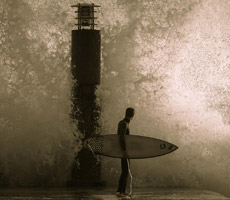
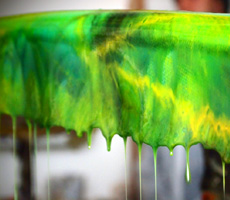

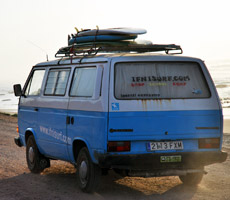
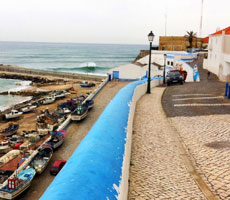
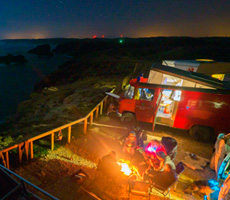



2 Comments
Hello,
Thank you for this interesting article
You can also mention the French project in Paris called Waves in City - Surf Different! (www.avesincity.fr)
Best regards,
The communication team
Hello,
Thank you for this interesting article
You can also mention the French project in Paris called Waves in City – Surf Different! (www.wavesincity.fr)
Best regards,
The communication team